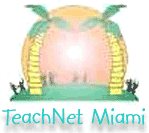

Report From The PondHow it Works:In this science inquiry project my kindergarten students got to turn our classroom into a miniature simulation of a pond life habitat. Working together cooperatively, they conducted simple hands-on experiments with goldfish and water. They raised and charted the growth of tadpoles, and observed a small eco-linked pond that was self-supported by small plants, fish, snails and algae. The students also made drawings, murals and models of insects, fowl and wildlife that are indigenous to the various food chains in and around a pond. They also made use of multimedia materials such as Sammy's Science House. This primary CD ROM program, allowed the students to explore and interact with pondlife during all of the seasons. "A Report From The Pond" provided the children with an up close and personal interaction with some common pond animals, plants, and insects. Appropriate classroom habitats were established to make our investigations as realistic as possible. The students observed and cared for one animal over a period of time. Then, they were introduced to another animal similar to the first but with differences in structure and behavior. The opportunities for observation, communication, and comparisons were enhanced throughout this process. Our science exploration lasted eight weeks. It was divided into four parts, each spanning a period of two weeks. The first two weeks were focused on insects that can be found in and around a pond. The next two weeks focused on animals that live around pond habitats. The third two weeks focused on our assessments and developing our own "A Report From The Pond" web pages, using Web Workshop by Sunburst. Finally, we were involved in an online science collaboration with Explore A Pond (http://uen.org/utahlink/pond/ ). All participants adopted a local pondlife habitat in their area; our class adopted the Everglades. It is an excellent resource for learning about animals, plants and insects that dwell in and around ponds. Standards: Observe that plants and animals reproduce their own kind.Describe and classify living and non-living parts of a pondlife environment. Observe and classify objects that sink or float Develop students knowledge base on how animals change and grow Identify food, air, and water as important things that animals need to survive Use technology to locate, evaluation and collect information Use technology tools to process data and report results Estimated Class Periods To Complete: 10 or more Software and Materials Used: Sammy's Science House (CD-ROM), Web Workshop (CD-ROM), Teacher Created Materials "Weather Activities" (CD-ROM), Quick Take Camera Internet connected computers, E-mail, Macmillan Sing and Learn Records Keywords:Pondlife, Primary Science, Frogs, Tadpoles, Kindergarten, Science Units, Habitats, Pondlife, Habitats, The Everglades Students:The children in my kindergarten classroom are between the ages of five and six. The socio-economic background of the students range from high middle class to that of public assistance. seventy percent of the students speak English as their first language. The other twenty percent of the students speak Creole or Spanish as their first language. Their ability levels range from that of gifted to below grade level. Overall Value:The goal of this project advocates the need for introducing students to inquiry investigative-based science at an "early" age. In this unit students get a first hand experience with experiments that challenge them intellectually and exercise their minds. They also learn how to construct and organize concepts about the working world around them. And to observe, and compare their findings. Tips:Look for guest speakers who are willing to share their knowledge of pondlife with the students. Take the students on a pond related field trip such as that of a National Park (with a water habitat) and/or your local Museum of Science. |
About the Teacher: Over the years, Carol Delancy has been unwavering in the personal quest of becoming an innovator with childhood students and their increased knowledge of science and technology through the use of the World Wide Web. The training that she received from Science Learning Network and the Museum of Science, combined with her own pursuit, has lead Carol to create and use a variety of creative multimedia strategies in her classroom. These strategies have been very beneficial in providing for the different learning styles and experiences that her students have. As a result of this, she has written and developed numerous primary science technology integrated thematic units. Subjects: Science and Computer Science Grade Levels: 1
|
What do you think of my
project? I'd really like to hear your opinion -
Click here for a very brief survey.